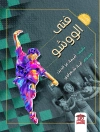Chapters in this book present meticulous research into the adaptation and significance of Asian combatives as infused within American society. These chapters are presented here as published according to their original chronological appearance in the Journal of Asian Martial Arts.
In the first chapter Dr. John Donohue presents an anthropological perspective on what Asian martial arts represent to Americans and why Americans choose to study them. The attraction goes far beyond the physical aspects of self-defense, embracing the symbolic associations of ‘warrior heros, ‘ grasping of power and skills through mythical means, and a quest for a coherent world view. Though Asian martial systems do establish high principles, their interpretation and evolution are affected by powerful societal trends, ranging from the inclination toward mutual improvement to commercialism and militarism.
In chapter two, Dr. Daniel Rosenberg brings a realistic picture of the favorable and not so favorable aspects of martial art studies. In chapter three, martial arts coverage by four major-market American newspapers are analyzed by Ellen Levitt. Since the articles reflect trends and attitudes, we should be concerned with how they and their styles are presented in newspapers. Frederick Lohse’s chapter shows that by identifying, or contrasting, ourselves with shared ideas and images, we construct an identity that is both salient to ourselves and understandable to those around us. Her examines some aspects of how practitioners in the USA use the martial arts as one means of constructing their narratives of Self.
In chapter five by Geoffrey Wingard, an ethnographic ‘snapshot’ is examined to illustrate the validity of the seminal studies of martial arts and aggression. This chapter shows how students representing traditional and non-traditional martial arts engage each other, represent their arts and exhibit aggressive and non-aggressive behaviors.
The final chapter by John Donohue examines how the revolution in communications technology has altered American understanding regarding the relationship between skill acquisition/training and the end result of such training. Just what attracts people to study fighting arts? What psychological needs are met when one joins an instructional class? Practitioners and scholars will find much in this anthology to broaden the perspective and understanding of why Americans are so fascinated with the Asian martial traditions.
विषयसूची
- Wave People: The Martial Arts and the American Imagination, by John Donohue, Ph.D.
- Paradox and Dilemma: The Martial Arts and American Violence, by Daniel Rosenberg, Ph.D.
- Fit to Print: Martial Arts as Covered in Major American Newspapers, by Ellen Levitt, M.A.
- Self-Transformation and the Martial Arts in the American Cultural Environment, by Frederick W. Lohse, III, Ed.M.
- Aggressive Discourse in the Martial Arts: An Ethnographic Snapshot, by Geoffrey Wingard, M.Ed.
- Virtual Enlightenment: The Martial Arts, Cyberspace, and American Culture, by John Donohue, Ph.D.
- Index












